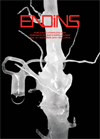| Registro completo | |
|---|---|

Accedir a l'exemplar |
|
| Títol: |
 El sistema de cavitats Gleda - Camp des Pou (Manacor, Mallorca)
El sistema de cavitats Gleda - Camp des Pou (Manacor, Mallorca) |
| Autor/es | Gracia, Francesc ; Clamor, Bernat ; Gamundí, Pere ; Fornós, Joan Josep |
| Matèries en català: | Bioespeleologia. |
| Matèries en anglès: | Biospeleology. |
| Resum-Abstract: | [cat] La connexió entre la cova de sa Gleda i l’avenc des Camp de Pou ha permés afegir un nou sistema al llevant de Mallorca, el sistema Gleda-Camp des Pou, de 13.500 m de recorregut, que situa aquesta cavitat litoral com la de major recorregut subaquàtic d’Europa dins d’aquesta situació i espeleogènesi. Es comenten les principals fites de l’exploració del sistema i els aspectes tècnics per poder realitzar les tasques exploratòries a la cavitat. Es fa la descripció tant dels nous sectors descoberts com de les contribucions novedoses dels sectors ja coneguts. L’estudi de l’estructura de la cavitat, amb la superposició de la topografia a la superfície del terreny, les sales d’esfondrament i els condicionants litològics ajuden a comprendre millor la gènesi i evolució de la cavitat. Un aspecte a destacar és el contrast entre els sectors més occidentals, profusament decorats per espeleotemes, amb els sectors orientals a on són gairebé absents. Se citen un total de 12 espècies de crustacis a les aigües subterrànies de la cavitat, capturades especialment a les proximitats de la boca, ja que bona part del sistema presenta densitats poblacionals molt baixes per tractar-se d’un hàbitat molt oligotròfic. [eng] The connection established between Cova de sa Gleda and Avenc des Camp des Pou has allowed to add a new extensive cave system to the great speleological potential of eastern Mallorca coastal karst area: with a development of 13,500 m, this system is the longest underwater littoral cave known up to now in Europe. The main benchmarks in its exploration are exposed, as well as the technical aspects of the diving tasks developed in the cave. The description of the recently discovered extensions is presented in this paper together with new observations on the previously known sectors of the system. The study of the cave pattern –using the superimposition of the survey on the map of the area– and the disposition of collapse chambers linked to clear lithological conditionings, contribute to a better understanding of its genesis and evolution. An aspect that must be highlighted is the sharp contrast existing between the western sectors, very well-decorated with speleothems, and the eastern ones where the speleothems are almost practically absent. A total of 12 crustacean species have been cited in the cave waters, collected especially near the cave entrance because the population densities are very low due to the oligotrophic character of this habitat. |
| Font: | Endins 2010, Vol. 34, pp. 035-068 |
| Identificador: | e-ISSN: 2386-7299 |
| Tipus de document: | info:eu-repo/semantics/article ; info:eu-repo/semantics/publishedVersion |
| Avís legal: | all rights reserved ; info:eu-repo/semantics/openAccess |